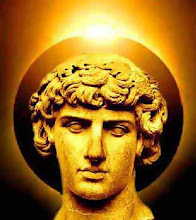
Fritjof Capra on the Unity of All Things, One
The most important characteristic of the Eastern world view- one could almost say the essence of it- is the awareness of the unity and mutual interrelation of all things and events, the experience of all phenomena in the world as manifestations of a basic oneness. All things are seen as interdependent and inseparable parts of this cosmic whole; as different manifestations of the same ultimate reality. (Capra,The Tao of Physics, 1975)In ordinary life, we are not aware of the unity of all things, but divide the world into separate objects and events. This division is useful and necessary to cope with our everyday environment, but it is not a fundamental feature of reality. It is an abstraction devised by our discriminating and categorising intellect. To believe that our abstract concepts of separate ‘things’ and ‘events’ are realities of nature is an illusion. (Capra, The Tao of Physics, 1975)
The central aim of Eastern mysticism is to experience all the phenomena in the world as manifestations of the same ultimate reality. This reality is seen as the essence of the universe, underlying and unifying the multitude of things and events we observe. The Hindus call it Brahman, The Buddhists Dharmakaya (The Body of Being) or Tathata (Suchness) and the Taoists Tao; each affirming that it transcends our intellectual concepts and defies further explanation. This ultimate essence, however, cannot be separated from its multiple manifestations. It is central to the very nature to manifest itself in myriad forms which come into being and disintegrate, transforming themselves into one another without end.(Fritjof Capra, The Tao of Physics, p210)
A careful analysis of the process of observation in atomic physics has shown that the subatomic particles have no meaning as isolated entities, but can only be understood as interconnections between the preparation of an experiment and the subsequent measurement. Quantum theory thus reveals a basic oneness of the universe. It shows that we cannot decompose the world into independently existing smallest units. As we penetrate into matter, nature does not show us any isolated ‘basic building blocks’, but rather appears as a complicated web of relations between the various parts of the whole. (Fritjof Capra, The Tao of Physics, p78)
The ‘this’ is also ‘that’. The ‘that’ is also ‘this’… That the that and the this cease to be opposites
is the very essence of the Tao. Only this essence, an axis as it were, is the center of the circle responding to endless changes. (Quoted in Fung Yu-Ling, A Short History of Chinese Philosophy, 1958 p.112)
(Capra, The Tao of Physics, 1975)
Problem of the One and the ManyBoth Indian and Greek Philosophy originated from the correct realization that there must be One thing that is common to, and connects, the Many things, and further that Motion (activity, change) was also central to existence. All things come out of the one, and the one out of all
things. (Heraclitus, ~500BC)
(Collinson, 2000)
The solution to this problem is actually very simple. One Infinite, Eternal Space exists with the properties of a Wave Medium. Thus Motion, as the wave Motion of Space, is the property of Space, and is necessarily connected to Space as it is Space which is moving! And once we have this connection between the One thing Space, and the many things, i.e. matter as the Spherical Wave Motion of Space, then we can in fact form concepts and logic (which require two necessarily connected things, i.e. the wave Motion of Space.)






